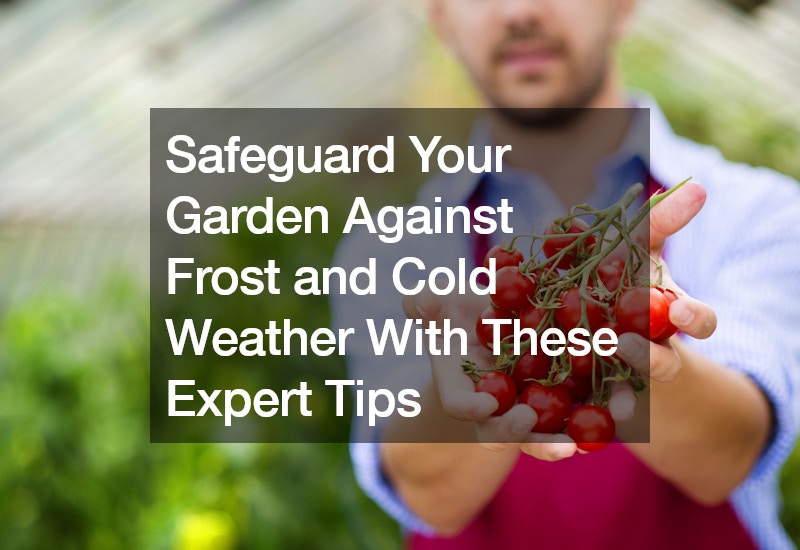As gardeners, we eagerly await the arrival of spring and the opportunity to nurture our plants under the warm sun. However, the transition from winter to spring can bring unexpected challenges, particularly the threat of frost. Frost poses a significant risk to our gardens, potentially causing damage to delicate plants and disrupting our carefully laid plans. But fear not! With the right strategies and preparations, you can safeguard your garden against the chill of winter and ensure your plants thrive even in the coldest conditions.
Understanding Frost
Frost occurs when temperatures plummet below freezing, causing moisture in the air and on the ground to crystallize into ice. This icy coating can be detrimental to plants, particularly young seedlings and tender growth.
To effectively protect your garden from frost, it’s essential to understand its causes and effects.
Frost forms under clear, calm conditions when heat from the ground radiates into the atmosphere, causing surface temperatures to drop. This phenomenon is most common on clear nights with minimal cloud cover, as clouds act as a blanket, trapping heat near the surface. Low-lying areas and locations with poor air circulation are more susceptible to frost formation.
The effects of frost on plants can vary depending on factors such as plant species, age, and overall health. Tender annuals and recently transplanted seedlings are particularly vulnerable, as their delicate tissues can be damaged or killed by exposure to freezing temperatures. Frost damage often manifests as wilting, blackened foliage, or even complete plant death. Repeated frost exposure can weaken plants over time, making them more susceptible to disease and pests.
With this understanding, you can explore effective strategies to protect your garden against frost and cold weather.
1. Choose Frost-Hardy Plants
One of the most effective ways to mitigate frost damage is by selecting plants that are resilient to cold temperatures. Frost-hardy crops, such as broad beans, garlic, and brassicas, can withstand chilly conditions and thrive in colder climates. By incorporating these resilient varieties into your garden, you can minimize the risk of frost-related losses and ensure a bountiful harvest.
2. Time Planting for Success
Timing is key when it comes to planting in frost-prone areas. By understanding your region’s frost schedule, you can strategically plan your planting times to avoid the worst of the cold weather. For example, in Tasmania and alpine regions, where frosts can persist well into spring, it’s crucial to delay planting sensitive crops until the risk of frost has passed. If you adjust your planting schedule accordingly, you can give your plants the best possible chance of success.
3. Utilize Microclimates
Microclimates offer pockets of warmth within your garden that can provide refuge for tender plants during cold spells. Strategically place your plants in areas with natural shelter, such as under tree canopies or against sunny walls, to create microclimates that offer protection from frost. Keep in mind that higher, warmer points in the garden are less susceptible to frost, making them ideal locations for less hardy species.
4. Implement Protective Measures
In addition to selecting frost-hardy plants and utilizing microclimates, there are several practical measures you can take to protect your garden from frost. Adequate watering is essential, as hydrated plants are more resilient to cold temperatures. Watering your garden before a frost can help insulate the soil and prevent it from freezing rapidly, reducing the risk of damage to plant roots.
5. Delay Mulching
While mulching is a beneficial practice for conserving soil moisture and suppressing weeds, it’s best to delay mulching until after the threat of frost has passed. Dark-colored mulch can absorb heat from the sun during the day, helping to keep the soil warmer at night. By waiting to mulch until after the last frost, you can maximize the soil’s ability to retain heat and protect your plants from cold temperatures.
6. Use Protective Coverings
For added protection during frosty nights, consider covering your plants with protective materials such as cardboard boxes, old bedsheets, or fabric. These coverings create a barrier against the cold and help trap heat radiating from the soil, keeping your plants warm and safe from frost damage. To prevent damage from the weight of the covering, place plastic pots around delicate plants to provide support and prevent crushing.
For those tender seedlings nurtured in a greenhouse, hoophouse, or cold frame, the time will come to transition them outdoors after the last risk of frost has passed. This transition allows them to acclimate to outdoor conditions gradually while still benefiting from the protection of their sheltered beginnings.
7. Invest in Semi-Permanent Solutions
In regions prone to consistent and extreme frosts, investing in semi-permanent structures can provide long-term protection for your garden. Simple solutions like poly pipe frames covered with shade cloth or clear plastic can create a sheltered environment for your plants, shielding them from the worst of the cold weather. These structures are easy to assemble and can be reused season after season, making them a cost-effective investment in the health of your garden.
Final Thoughts
Protecting your garden from frost and cold weather requires careful planning and proactive measures. By choosing frost-hardy plants, timing your plantings appropriately, and implementing protective strategies such as utilizing microclimates and covering plants with protective materials, you can minimize the risk of frost damage and ensure your garden thrives even in the coldest conditions. With a little foresight and preparation, you can enjoy a flourishing garden year-round, regardless of the weather.
.


